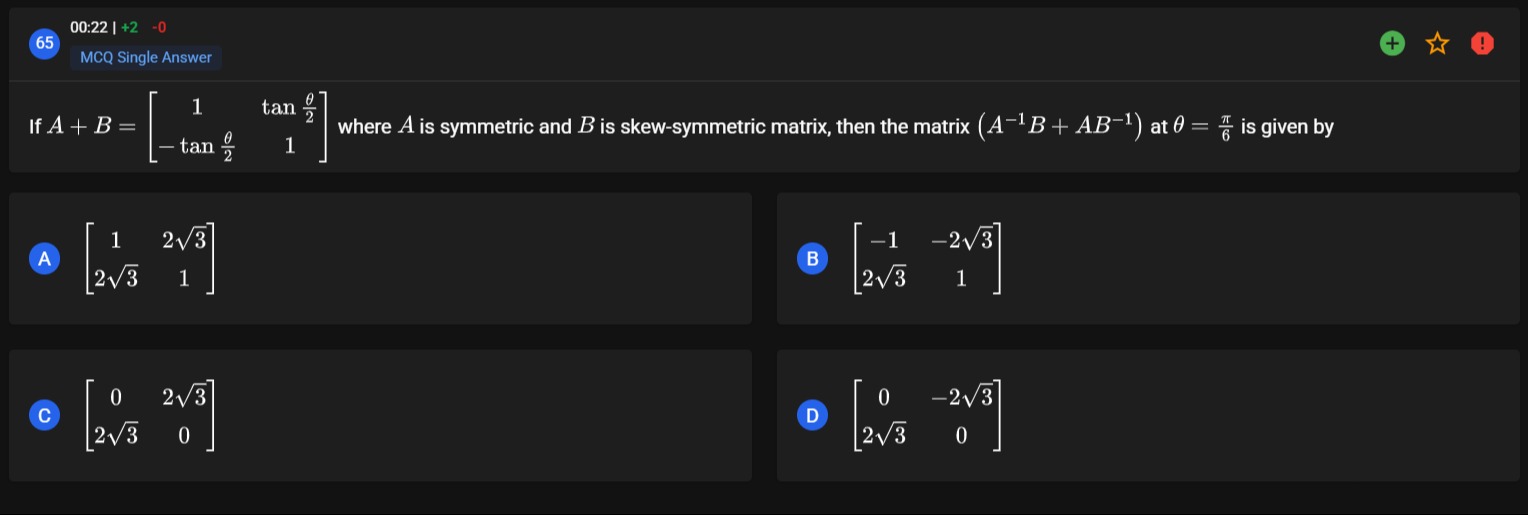Question
Question: If $A + B = \begin{bmatrix} 1 & \tan \frac{\theta}{2} \\ -\tan \frac{\theta}{2} & 1 \end{bmatrix}$ w...
If A+B=[1−tan2θtan2θ1] where A is symmetric and B is skew-symmetric matrix, then the matrix (A−1B+AB−1) at θ=6π is given by

[123231]
[−123−231]
[023230]
[023−230]
[023−230]
Solution
Here's how to solve the problem:
-
Decompose the matrix: Express A and B in terms of the given matrix and its transpose. Since A is symmetric and B is skew-symmetric, we have:
A=21(M+MT) and B=21(M−MT), where M=[1−tan(2θ)tan(2θ)1].
-
Calculate A and B: Compute A and B using the formulas above. You'll find that A=I (the identity matrix) and B=[0−tan(2θ)tan(2θ)0].
-
Simplify the expression: Since A=I, the expression A−1B+AB−1 simplifies to B+B−1.
-
Calculate B inverse: Find the inverse of B. If t=tan(2θ), then B=[0−tt0], and B−1=[0t1−t10].
-
Compute B + B inverse: Add B and B−1: B+B−1=[0−t+t1t−t10].
-
Evaluate at theta = pi/6: Substitute θ=6π. Then t=tan(12π)=2−3. Also, t1=2+3.
-
Final Calculation: Calculate t−t1=(2−3)−(2+3)=−23. Therefore, B+B−1=[023−230].
Thus, the final answer is [023−230].
